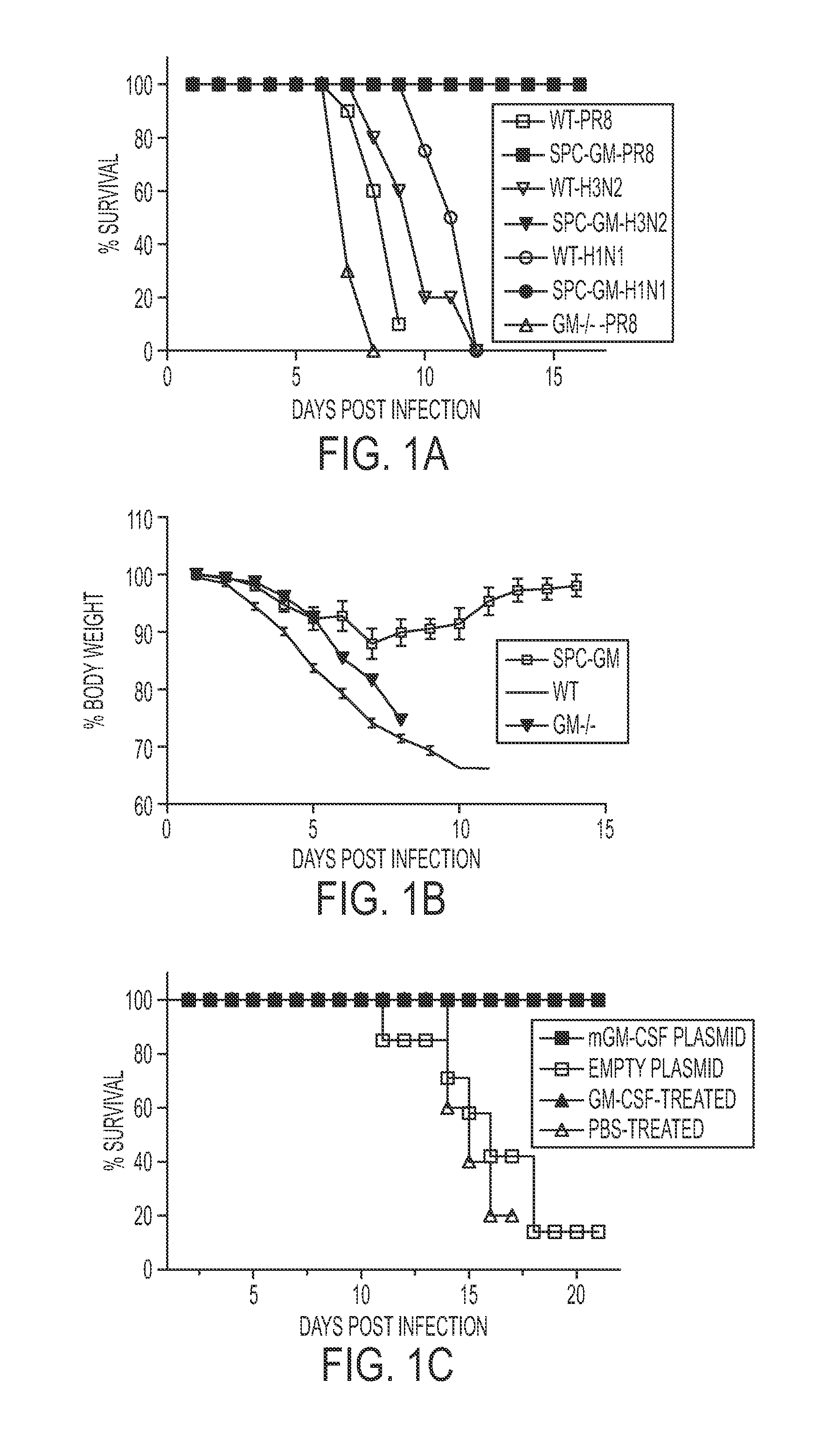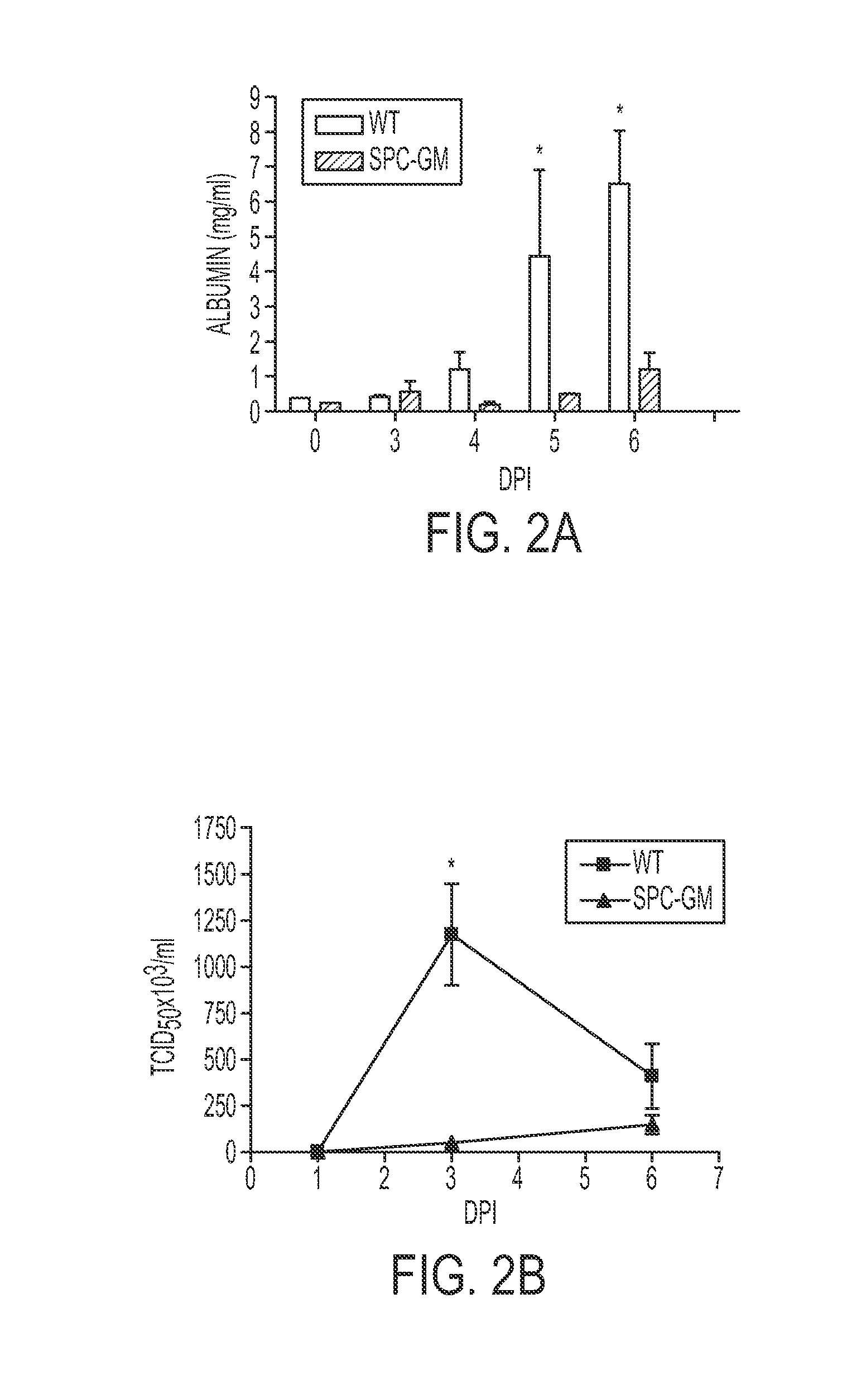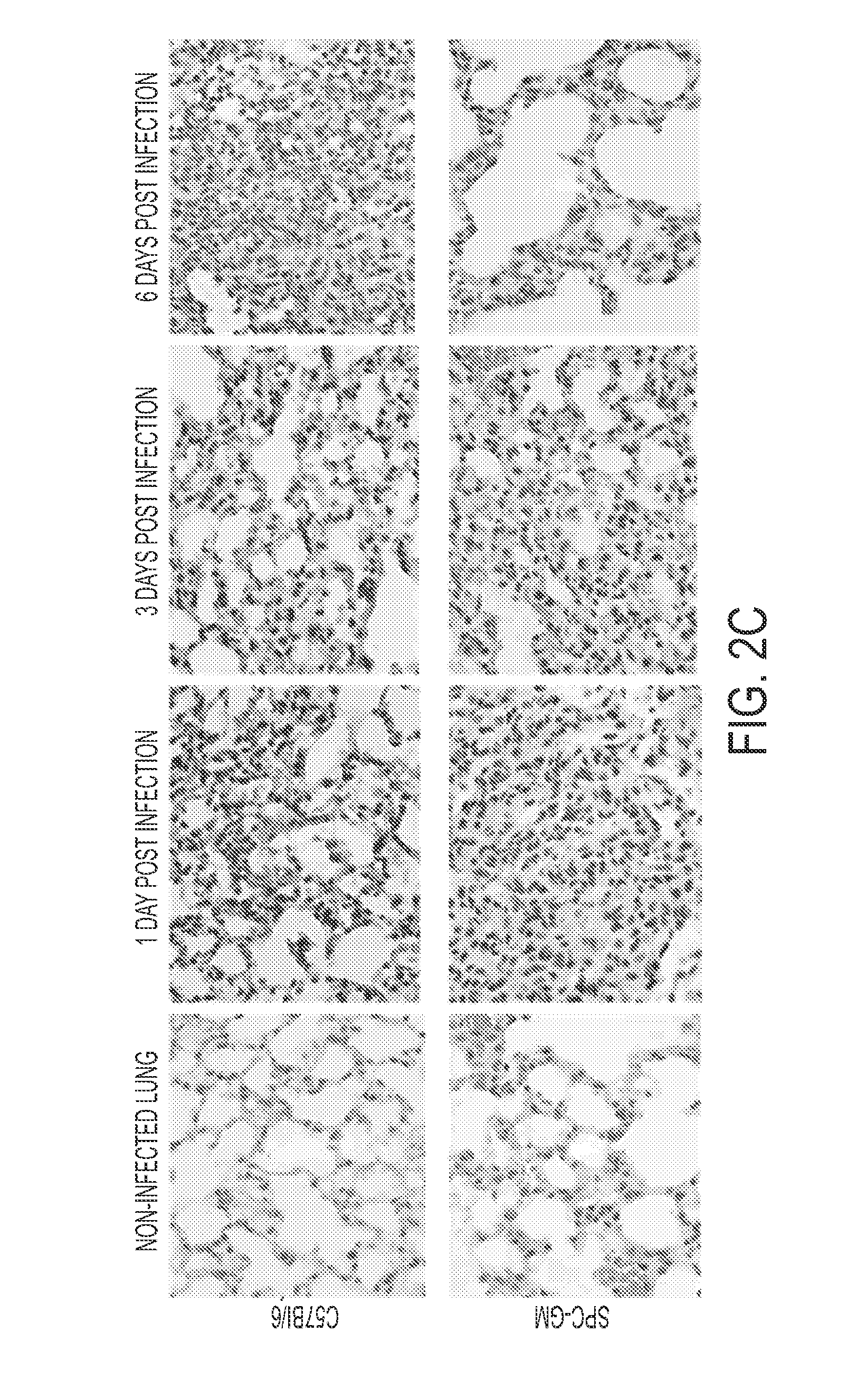Protection against influenza infection by granulocyte-macrophage colony stimulating factor
a technology of granulocyte-macrophage colony and innate immunity, applied in the field of medicine and immunology, can solve the problems of severe human disease, unrecognized ammoetization mechanisms, and substantial additional morbidity, and achieve the effects of suppressing the development of influenza infection, stimulating the innate immunity, and increasing the homeostasis of lung
- Summary
- Abstract
- Description
- Claims
- Application Information
AI Technical Summary
Benefits of technology
Problems solved by technology
Method used
Image
Examples
example i
Materials and Methods
[0163]Mice.
[0164]WT C57BL / 6 mice were purchased from the National Cancer Institute. Tg mice overexpressing GM-CSF in alveolar epithelial type II cells were generated from GM− / − mice on a C57BL / 6 background, by expression of a chimeric gene containing GM-CSF under the control of the human SP-C promoter (SPC-GM) (24). These SPC-GM mice were backcrossed to C57BL / 6 mice for >10 generations, and DNA typing confirmed that they had the genetic markers of C57BL / 6 mice. Experiments were conducted under guidelines of the Institutional Animal Care and Use Committee at the University of Texas Health Science Center at Tyler.
[0165]DNA Plasmids and In Vivo Transfection.
[0166]A DNA plasmid that expresses murine GM-CSF, pORF9-mGMCSF, and a control plasmid, pORF9-mcs (both from InvivoGen), were used to transform Escherichia coli, which was grown overnight in LB medium with ampicillin. Plasmid DNA was extracted, using the EndoFree Plasmid Giga Kit (QIAGEN). DNA was mixed with in v...
example ii
GM-CSF Expression in the Lung Reduces Mortality from Influenza
[0193]To determine if GM-CSF could protect against influenza, SPC-GM, GM− / − and WT mice were infected with 5 LD50 of the influenza PR8 strain. All WT mice died after 8-11 days, and all GM− / − mice died after 6-8 days. In contrast, all SPC-GM mice, which only express GM-CSF in the lung, survived (FIG. 1A). WT and GM− / − mice progressively lost weight, whereas SPC-GM mice lost less weight and soon recovered (FIG. 1B). These results show that pulmonary expression of GM-CSF conferred marked protection against lethal influenza infection.
[0194]PR8 is a laboratory influenza strain. To determine if SPC-GM mice were resistant to clinical influenza strains, infected mice were infected with lethal doses of the H3N2 strain, HK68, and a mouse-adapted H1N1 California / 04 / 092009 swine influenza pandemic strain (25). All WT mice died, whereas all the SPC-GM mice survived, indicating that GM-CSF in the lung protected against clinical and lab...
example iii
Delivery of GM-CSF to the Lungs of WT Mice Protects Against Influenza
[0195]The studies in Example I suggested that GM-CSF produced in the lung protects against influenza. However, genetic differences other than GM-CSF production may have contributed to influenza resistance. To exclude this possibility, the effect of GM-CSF on WT mice was evaluated. A murine GM-CSF-expressing vector was coated with polyethyleneimine, which enhances DNA expression 400-fold and delivers it to the lung (27). All WT mice treated with this GM-CSF-expressing plasmid survived influenza infection, compared to no mice receiving the empty plasmid (FIG. 1C). Intranasal administration of recombinant mouse GM-CSF (rmGM-CSF) to WT mice also abrogated mortality from influenza (FIG. 1C).
PUM
 Login to View More
Login to View More Abstract
Description
Claims
Application Information
 Login to View More
Login to View More - R&D
- Intellectual Property
- Life Sciences
- Materials
- Tech Scout
- Unparalleled Data Quality
- Higher Quality Content
- 60% Fewer Hallucinations
Browse by: Latest US Patents, China's latest patents, Technical Efficacy Thesaurus, Application Domain, Technology Topic, Popular Technical Reports.
© 2025 PatSnap. All rights reserved.Legal|Privacy policy|Modern Slavery Act Transparency Statement|Sitemap|About US| Contact US: help@patsnap.com



